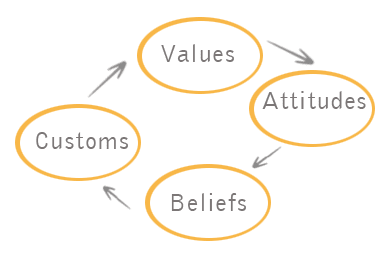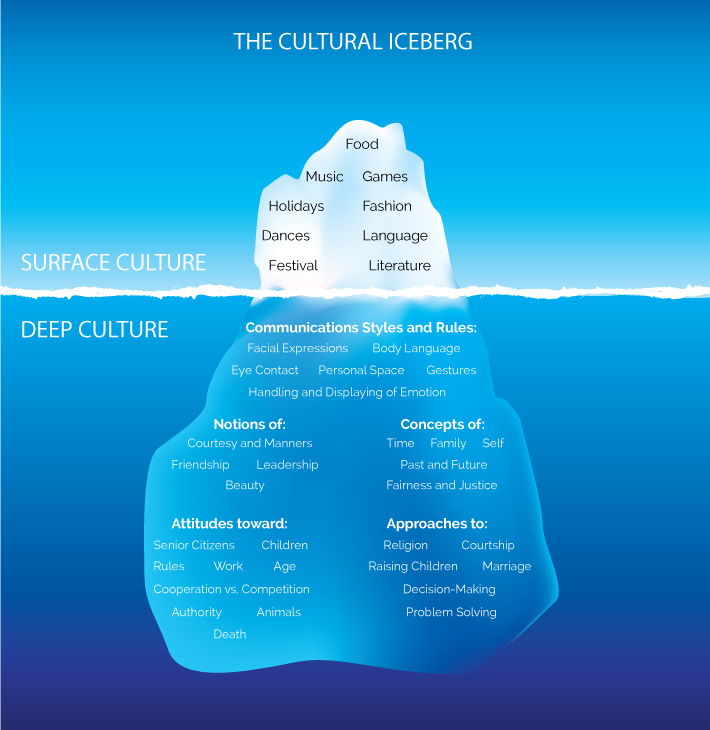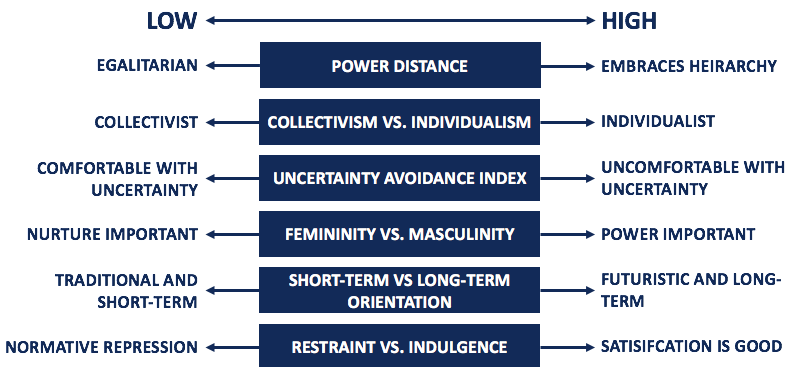
Learning Outcomes:
- Culture and its influence on behaviour and cognition: Study one example of culture and its influence on behaviour and cognition
- Cultural Groups are characterized by different norms and conventions — understand cultural groups and their norms
- Norms
- Cultural dimensions: Study one cultural dimension
- Enculturation: Study one effect enculturation has on human cognition and behaviour
- NEED TO ADD THIS FAGOT STUDY to your STUDY GUIDE TO STUDIES as it is NOT in Kognity! also Do a DOODLE NOTE!
- Acculturation: Study one effect acculturation has on human cognition and behaviour
- Assimilation/assimilate
Surface Culture vs. Deep Culture
It is important to understand the difference between surface culture and “deep” culture. Surface culture is easy to understand in that it is a somewhat self-defining term. Surface culture refers to the tangible norms of behaviour that you can see. For example fashion, food, personal space etiquette, table manners, etc.
Deep culture on the other hand, are the beliefs and values that give rise to the surface culture. A common metaphor is that of an iceberg:

Learning Activities
The activity linked HERE will require that you investigate and understand “CULTURAL DIMENSIONS”
The activity LINKED HERE will require reflection on your earliest childhood memory and require you to investigate the link between culture and memory!
This GUIDE TO UNDERSTANDING AND EXAMINING ACCULTURATION will walk you through the research necessary to answer a 22 point question on acculturation as well as require you to engage in a reflection activity. It also gives insight in regard to answering a 9 point question on “Assimilation”
Cultural Dimensions
Cultural dimensions have been deeply researched by Geert Hofstede and are a key understanding in cultural psychology. Hofstede has in essence quantified elements of “deep culture” for the purpose of understanding differences and similarities so to better facilitate human interaction.
The Cultural Dimensions identified by Hofstede are:
